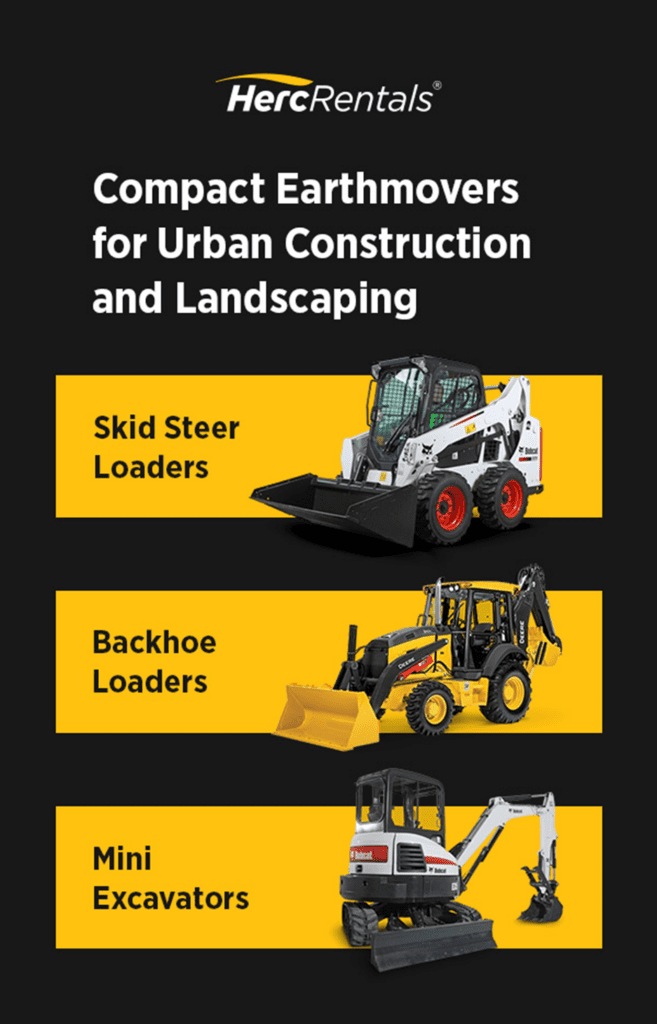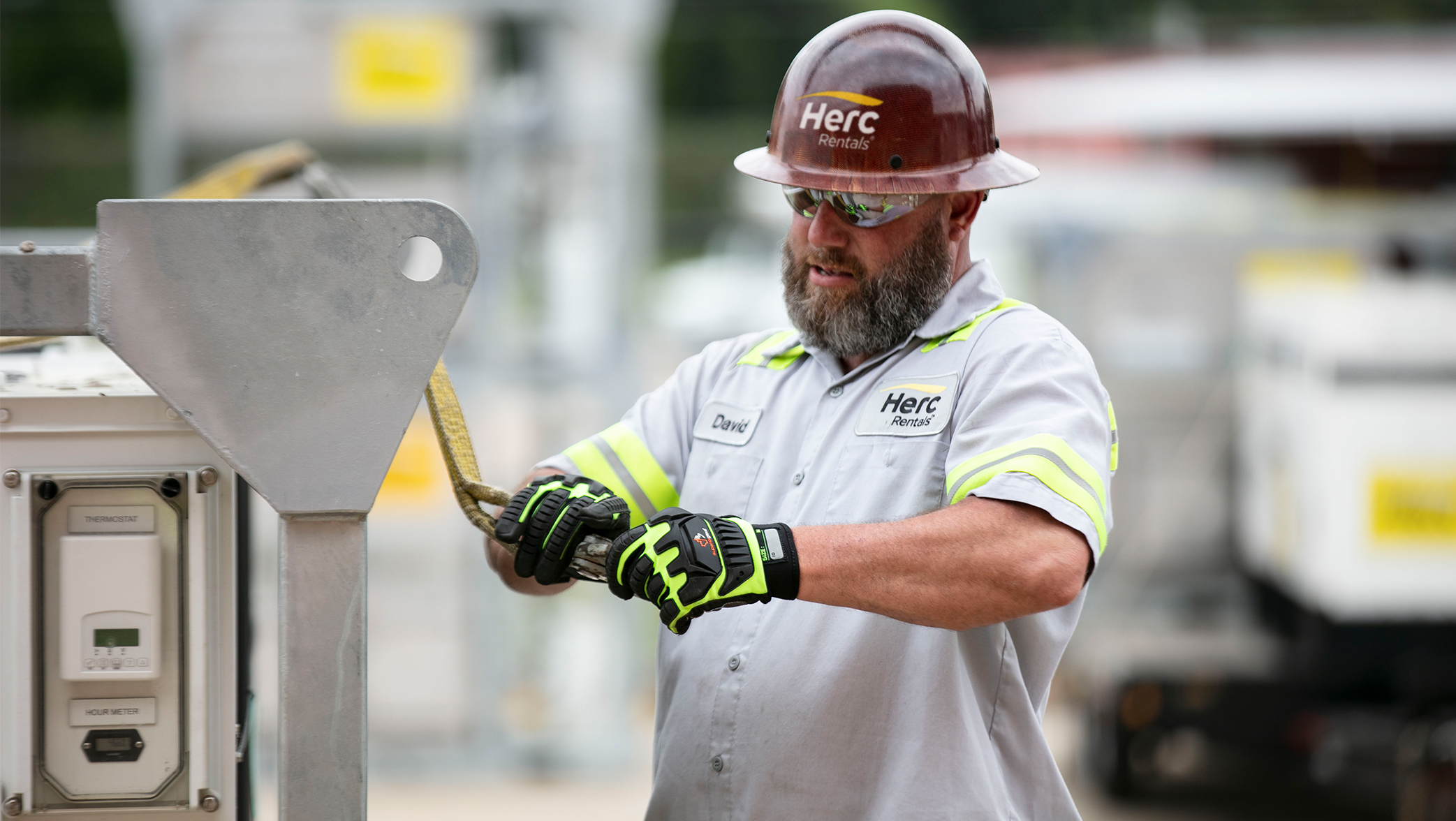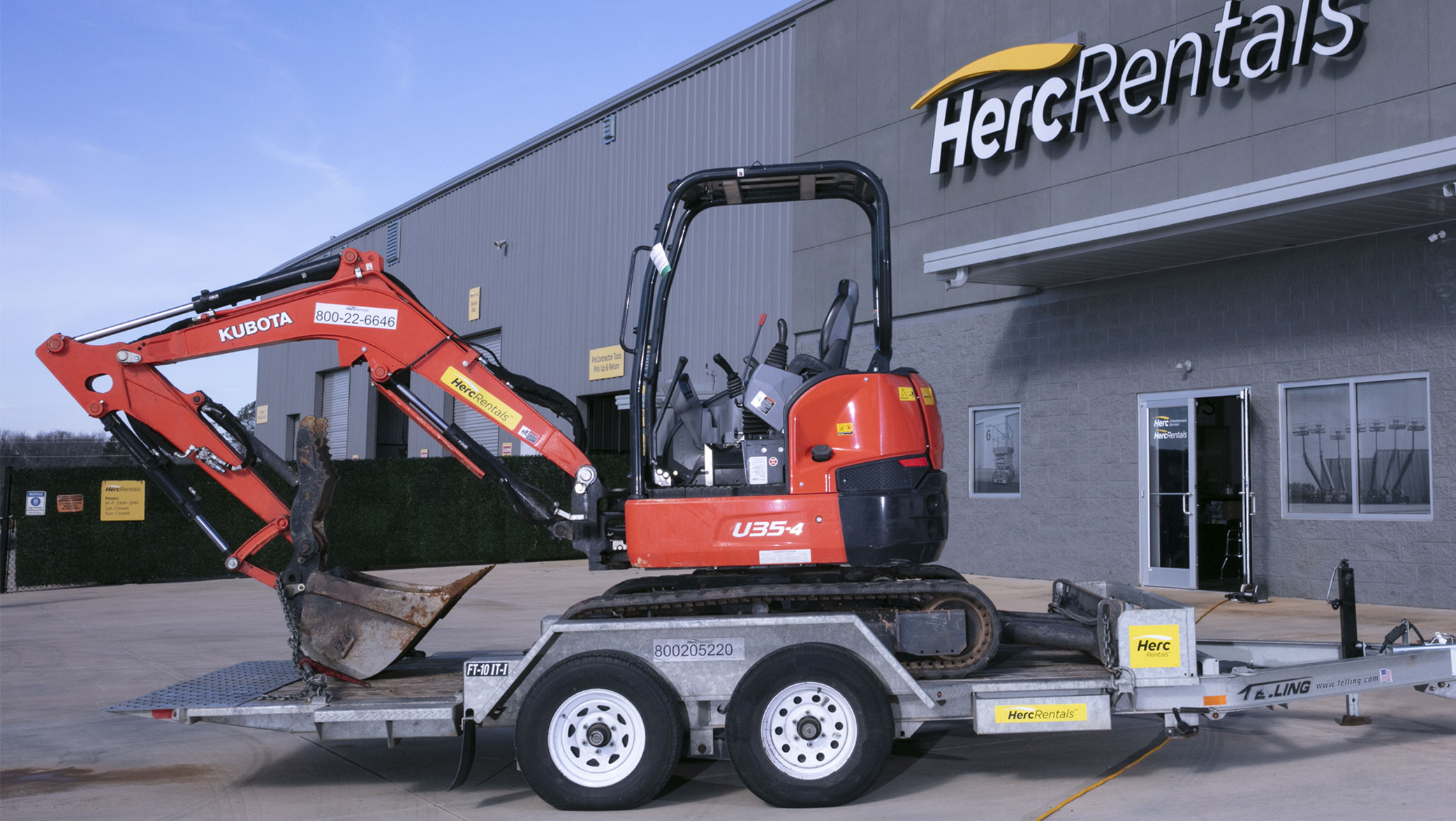As construction and landscaping applications continue to gain popularity, manufacturers consistently release new types of earthmoving equipment to keep up with the demand. With competitors accessing the latest models, construction equipment selection is increasingly important.
A reliable rental partner can mean the difference between securing a client and losing them to the competition. They can guide your selection for each type of construction job, boosting project efficiency and profitability.
Factors to Consider for Your Next Construction Project
Earthmoving equipment is used across several industries, including mining, landscaping and construction. Unsuitable equipment can be expensive in the long term, slowing you down and forcing your business to incur the associated costs.
With many equipment options available, knowing how to choose the right construction equipment is the first step to increasing project quality and efficiency.
Understand Project Scope and Nature

Earthmovers are available in various sizes to suit the size and scope of each project. It’s crucial that whatever equipment you choose aligns with the project’s demands. Keep the following factors in mind when evaluating the nature of your project:
- Construction site conditions: Your job site itself can limit your equipment choice. Assess the roads accessing the site so you can arrange appropriate transport. Some rental partners collect and deliver your equipment to make the process more convenient.
- Project size: Different types of earthmoving equipment shine in specific environments. Consider the space you have to work with and how this affects the size of your chosen machines.
- Hauling distance: The hauling distances at your site affect your cycle times, especially over longer distances. Choosing equipment without adequate size and speed will result in production delays and wasted time.
- Load height and capacity: Along with the ground dimensions at your job site, it’s critical to factor in load heights. Ensure your chosen machinery meets the requirements.
Assess Earthmover Performance and Capabilities
Choosing the right construction equipment involves finding the perfect balance of size, power and versatility to achieve project goals. Your equipment must perform the required function as efficiently as possible without the additional expense of power, torque and capabilities you don’t need. It’s also best to find versatile machines that perform several functions to cut costs further.
Keep the following points in mind when assessing earthmover performance:
- Flexibility: Conditions change quickly at a job site. You rely on good weather to stick to your timelines and maintain productivity. Research the weather conditions in the area and choose equipment you can use.
- Versatility: Renting a single piece of equipment that can perform multiple functions is more efficient and cost-effective than renting a separate machine for each task.
- Equipment size: A residential project will have different size requirements from an extensive landscaping or construction job.
Prioritize Safety and Operational Efficiency
The construction industry has a high accident rate, about 2.5 times higher than manufacturing, making safety critical in heavy equipment for construction. As a result, equipment manufacturers have incorporated many features and technological advancements to improve operator safety, boost confidence and maintain regulatory compliance. Safety features play a significant role in earthmover selection, as do secondary considerations like operator comfort and visibility.
Think about how much experience your team has with your potential equipment and what type of training they need. Quality rental partners offer safety training on all their rental options, allowing your team to gain confidence and skills before or during a project.
Top 5 Earthmovers for Large-Scale Construction Projects
Earthmoving equipment selection begins with a comparative analysis of the most popular equipment. Depending on your specific requirements, the following five options provide versatility, efficiency and reliability.
Excavators

Excavators are versatile machines used for various landscaping and construction tasks such as debris removal, digging, grading and canal dredging. They have many capacities and depths, come in several sizes and can complete various tasks, making them the most popular earthmoving equipment, accounting for over 40% of the global market.
The type of excavator you need depends on several factors, including worksite conditions, digging depth, lifting capacity, horsepower and torque. Various sizes are available to suit different environments, from mini excavators for small spaces to long-reach options. Some criteria to consider when selecting an excavator include:
- Engine power: Your excavator must have the necessary torque and horsepower to navigate the job site.
- Weight: Inquire about the excavator’s maximum operating weight, which includes the operator, attachments and load options. Your chosen machine must be heavy enough to handle the job but not so heavy that it damages the site.
- Bucket capacity: As excavators are primarily for digging, bucket capacity is essential. Check the types of buckets your chosen model supports and the maximum bucket capacity.
Bulldozers
Bulldozers are essential for shaping the land to your project’s specifications, pushing heavy materials, leveling and loading. Depending on your project, you can select one of three types — wheel, mini or crawler. Wheel bulldozers are optimal for large earthmoving projects, while mini bulldozers suit small residential spaces. Crawlers have the edge on sites with haphazard terrain.
One of the most important factors when choosing a bulldozer is the blade. These machines have versatile blade attachments, making them suitable for many earthmoving tasks. Some of the different blade types include:
- Straight blades: These flat blades move material forward, ideal for providing a smooth surface in grading and leveling tasks.
- Universal blades: Also known as U-blades, they have straight sides and a curved bottom, allowing them to contain large volumes of material, pushing and carrying loads over long distances.
- S-blades: As the name suggests, these blades have an S-shape, perfect for efficient gathering and movement of material.
- Angle blades: An angle blade has a pivoting mechanism, allowing horizontal rotation and providing additional control over material placement.
- Semi U-blade: These blades combine straight and U-blades, blending maneuverability and increased capacity.
Loaders

Loaders are available in various sizes to suit different applications. They work well in many different settings and are used for scooping and moving materials or debris. You can also use them for clean-up, excavation and compacting. Your choice of loader depends on your job site requirements. Two main types of loaders exist:
- Wheel loaders: A wheel loader has a front-mounted bucket for digging and scooping materials. The wheels allow the operator to move materials efficiently.
- Track loaders: These loaders use tracks instead of wheels, making them perfect for muddy or uneven terrain. Track loaders are a fantastic option for soft soil, and the tracks allow the machine to handle heavier loads.
Dump Trucks
Dump trucks are a job site fundamental for anyone looking to transport large amounts of materials at a time. They often haul loose materials, transporting them efficiently from one location to another. These machines are perfect for clearing land and working on rough terrain. They often work together with other earthmoving equipment to boost project efficiency.
Two main types of dump trucks exist — standard and articulated. Your choice of dump truck depends on the terrain at the job site, as some models are solely for off-road use.
- Standard dump trucks: These models are helpful for on-road and highway driving and excellent for material transport across long distances.
- Articulated dump trucks: These off-road trucks can move large amounts of materials and have a pivot point from the cab to the body to provide a smaller turning radius. They are often all-wheel drive, ideal for rough terrain and rocky environments like quarries.
Motor Graders
Motor or road graders use a long blade to grade hard ground and prepare roads for surfacing. This equipment is non-negotiable for precision surfacing, with an adjustable blade in the front to level the ground and a ripper claw in the back for digging ditches. These versatile machines are excellent for compacting backfill areas and finish-grading in compact spaces.
Keep the following in mind when selecting a motor grader for your next project:
- Equipment size: Consider the proportions of your job site to ensure you can navigate the space.
- Attachments and adjustability: A motor grader becomes increasingly versatile with the right attachments. Ensure your model is compatible with the necessary attachments to complete the job. Motor grader blades are also adjustable to create level or inclined surfaces.
- Engine power: If you’re covering long distances, check that you have adequate horsepower to avoid unnecessary delays.
Compact Earthmovers for Urban Construction and Landscaping

If you’re working in a confined space, you need smaller earthmoving equipment without sacrificing power and efficiency. Some of the most popular compact earthmovers include:
Skid Steer Loaders
Skid steer loaders are compact, robust and versatile. Although often used for excavation and landscaping applications, various attachments mean they can perform multiple jobs. Skid steer loaders are easy to transport and can turn in their footprint, making them ideal for urban applications, from leveling ground to seasonal jobs like snow removal.
Backhoe Loaders
Backhoe loaders often have buckets on the back, acting as a digger and excavator, removing rubble, trenching and completing many other tasks. These machines are available in many sizes, so you can select the bucket best suited to the size and scope of your project. Compact models are best for small to medium-sized projects or landscaping sites.
This equipment is cost-effective on smaller projects as it performs three functions — acting as a tractor, loader and excavator. You can also add attachments like augers, hammers and rippers, making them a convenient option when on a tight schedule.
Mini Excavators
A standard excavator can complete massive amounts of work but lacks the precision for urban construction. Mini excavators are smaller versions of the standard equipment, complete with a blade on the front for grading and leveling the ground. They are compact, ranging from 1-10 tons, and are perfect for urban projects from small backyards to commercial roadwork.
As they are relatively light, mini excavators are easy to transport and maneuver, allowing operators to provide high-quality, precise work despite the spatial limitations.
Earthmover Attachments for Specialized Construction Tasks
One of the most significant benefits of earthmoving equipment is compatibility with attachments. With an expansive selection of attachments, one earthmover can perform the functions of several other machines, cutting project costs and boosting efficiency.
Enhanced functionality can transform a construction or landscaping project, improving machine performance, optimizing fuel efficiency and speeding up completion times. Attachments have specific features to suit your project needs, including the size and shape of buckets, the type of blade and the digging depth.
Hydraulic Breakers and Augers
In a typical landscaping or construction project, you must break up rock, demolish previous structures and drill holes for foundations. Earthmoving attachments eliminate the need for additional machinery, as you can turn one earthmover into several different machines with the right attachments.
Breakers and augers turn your earthmover into a multifaceted piece of equipment that can complete the following tasks:
- Drilling holes: Augers make easy work of drilling holes for tree planting, fencing and construction footings. They are compatible with earthmoving machines such as skid steers, excavators and backhoes.
- Breaking through solid surfaces: A hydraulic breaker is a large hammer that breaks through concrete, asphalt and rocks. It’s a standard attachment in mining, demolition and construction applications.
Quick Couplers and Thumbs
Coupling and uncoupling attachments can be time-consuming, creating unnecessary delays in your project and defeating the purpose of relying on one earthmover to complete several functions. Quick change attachments make the process more convenient, keeping operators productive and confident in their processes. When selecting an earthmover for a specific job, ensure you ask your rental partner about quick change attachments to ensure you get maximum return on investments.
While many earthmovers are compatible with various attachments, ensuring your chosen machine can manage the attachment you need is crucial. If an attachment is too heavy, for example, it can put the machine off balance or slow it down. In most cases, attachment platforms are designed to be universal, and your rental partner can provide adaptors to make the process more convenient.
Learn More About Earthmoving Equipment With Herc Rentals
Choosing the right earthmoving equipment is more complex than matching the machine’s capabilities with the job. It also involves working with a trustworthy and reliable rental partner who can guide you with their expertise and personalized service. Partnering with Herc Rentals means a more convenient rental experience and access to trusted brands so your team can work with confidence.
Our commitment to meeting your needs means we have an extensive inventory of trusted brands for all your construction needs. If you’re looking for something specific, we’ll find it or suggest an alternative to boost your project efficiency. Additionally, our flexible rental options, including equipment transportation and pick up, accommodate your project timelines and budgets.
Selecting the ideal earthmover can be challenging, but with Herc Rentals, you can tackle your next project confidently, knowing we have all the gear you need to succeed. Contact us today to learn more about our customized rental solutions, and one of our experts will be in touch to guide you through our convenient and user-friendly rental process.



